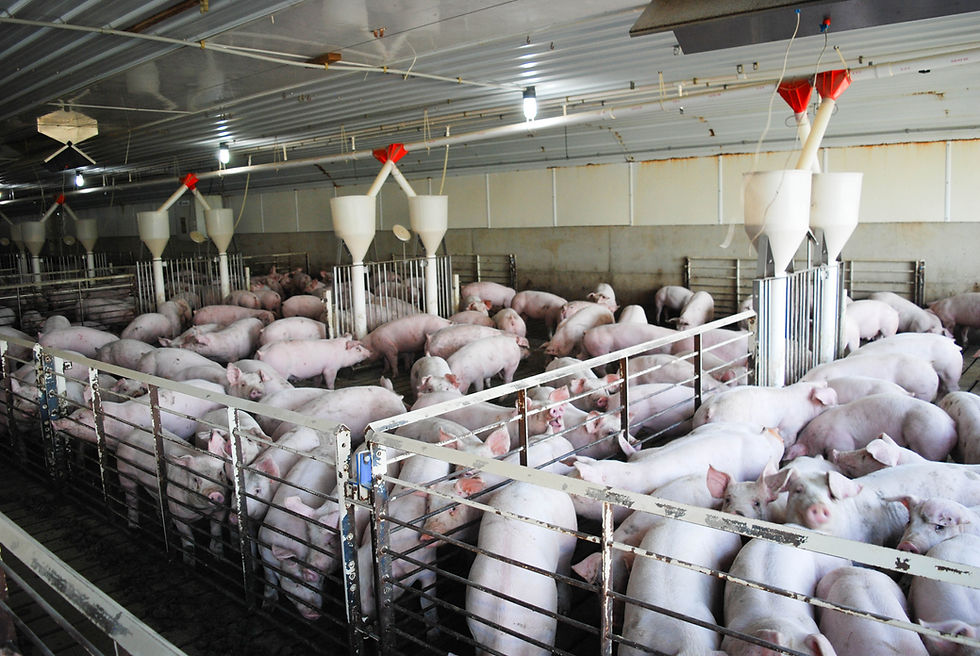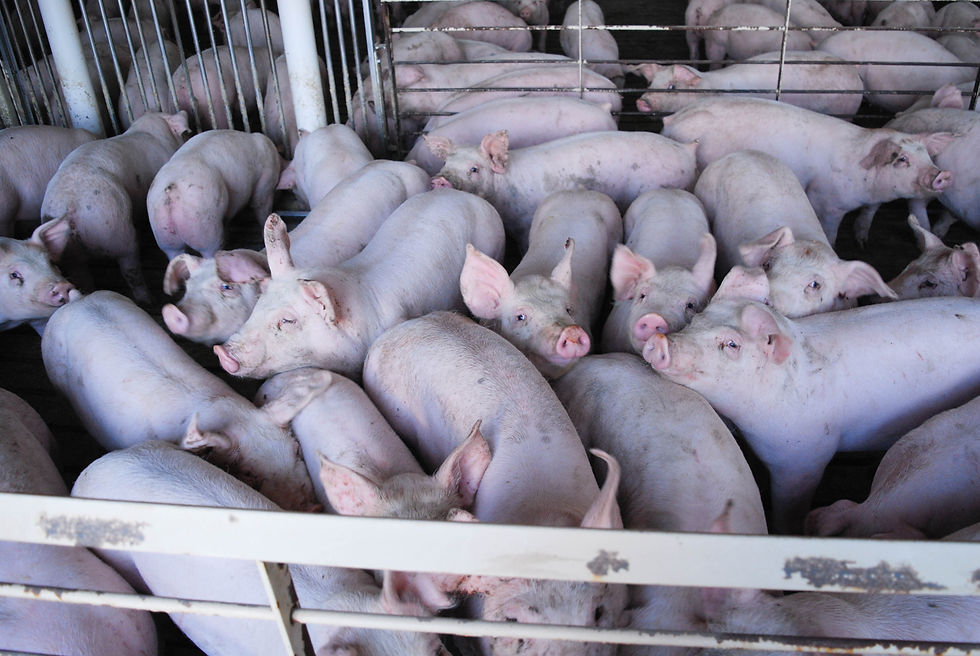Proven Ways to Drive Intake in Pigs During the Summer Months
- Ralco Agriculture
- May 3, 2024
- 2 min read
Updated: Jan 29

As the weather warms up, many farms start to see issues with their herd’s feed intake. Pigs are easily stressed by heat, and not eating is one of the first signs that there could be an issue.
When pigs eat, they begin to generate some internal body heat, just from digestion – so it makes sense that if they're already in a warm environment, eating would be something that could wait until the temps got cooler. Pigs often wait to eat until the cooler evening temperatures, but feed intake levels are generally suppressed across the board during the summer months.
Research shows that heat stress can cause up to a 30% reduction in feed intake. This can significantly impact growth and days to market, meaning your market weights could suffer if you’re limited because of a fixed time situation.
Push Pig Intake – Even in the Heat
Here are a few suggestions for keeping intake steady when the temperatures start to rise.
Formulate to Reduce Heat Increment Pigs don't want to eat anything that makes them hotter. So, maintaining a diet that is formulated to reduce heat increment can help take the pressure off the summer intake situation. A diet that reduces excess crude protein or fiber content – two significant contributors to heat increment – can help pigs maintain better consumption during the hot summer. Ralco's EnMAX® diets are specially formulated with less soybean meal to lower crude protein and heat increment in digestion. Excess soybean meal in diets unnecessarily drives up formulation costs and takes energy for pigs to digest, leaving animals more susceptible to heat stress and off-feed events. EnMAX diets help pigs stay cool and on feed.
Increase Nutrients and Energy Traditionally, producers have accepted the lower feed intake in the summer and compensated by making the diet more nutrient and energy-dense. They’ve usually done this by adding fat to the diet and providing more calories in a more concentrated quantity. While this works well, the cost of adding fats in today's marketplace can be quite high.
Improve Gut Health When economics is a limiting factor, increasing feed efficiency as much as possible becomes crucial. Nutrient absorption is driven by good gut health. A healthy gut is more able to utilize the nutrients in the diet. Also, a healthy gut creates a healthier immune system, meaning the body uses less energy to fight pathogens and diseases. Ralco’s ProsperEO™ increases good bacteria in the gut. Using prebiotic fiber and essential oils, the product has been shown to support a healthy immune system.
Watch Out for Mycotoxins Mycotoxins in your feed can significantly impact pig health and feed intake, and when intake is already a concern, this can substantially affect your finishing pigs. Mycotoxins, produced by mold, can be found in corn as they come out of the field and aren’t limited to any geography. Make sure you’re checking your feed regularly for these pathogens. Adjusting your formulations or adding a product that helps support animals in the face of feed quality concerns, such as IntegraFlo™, is a vital way to maintain feed quality.


